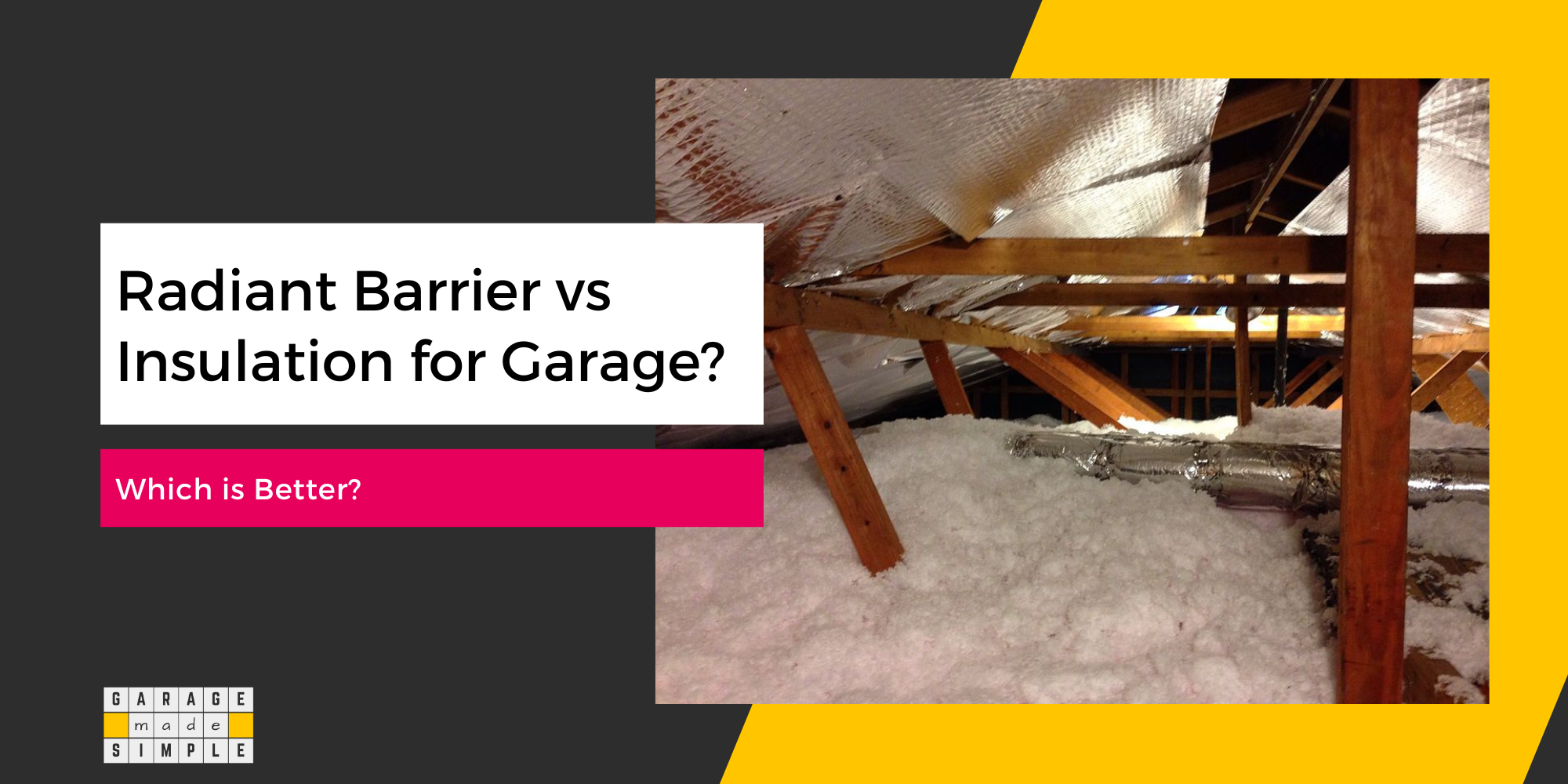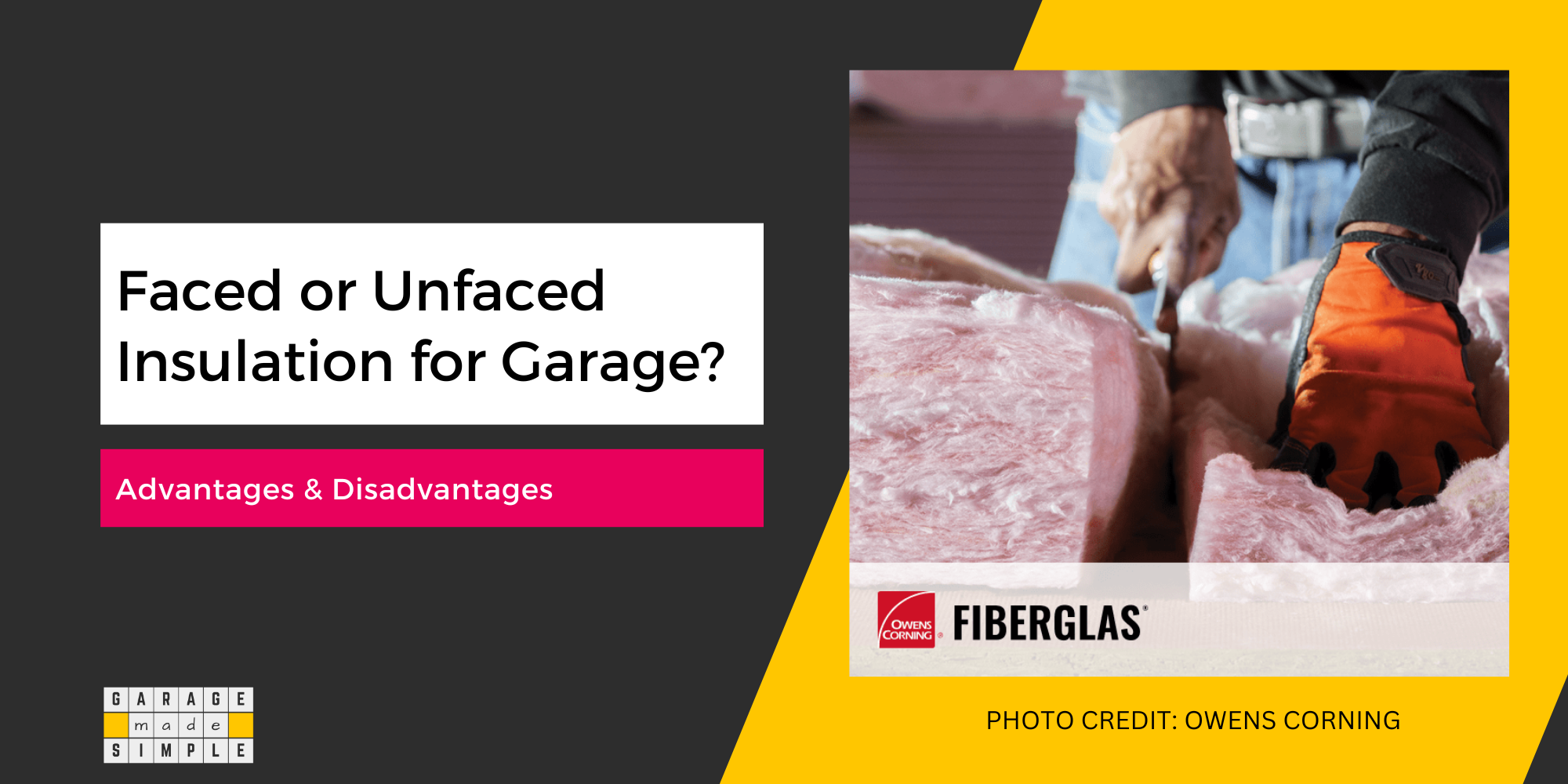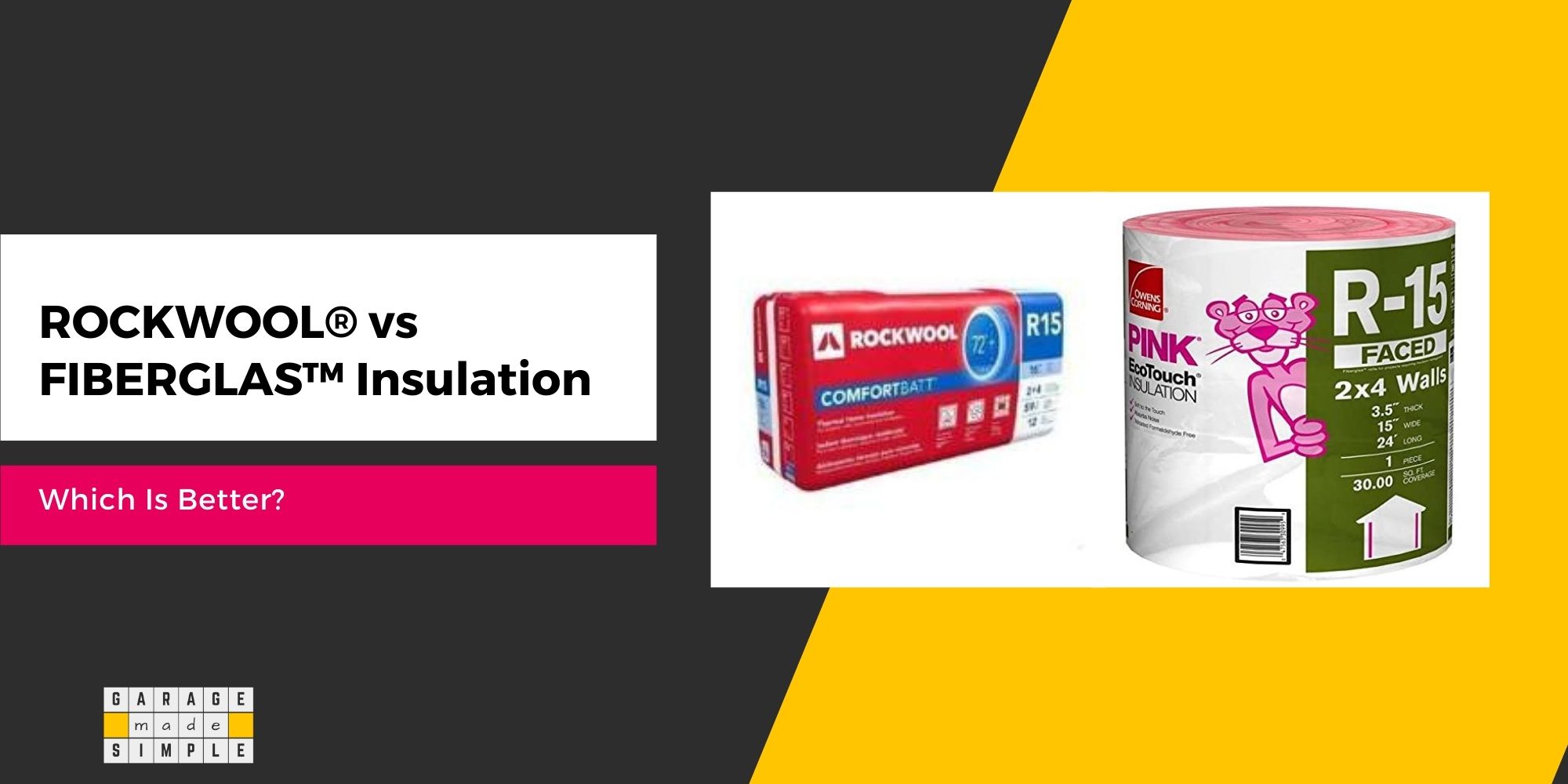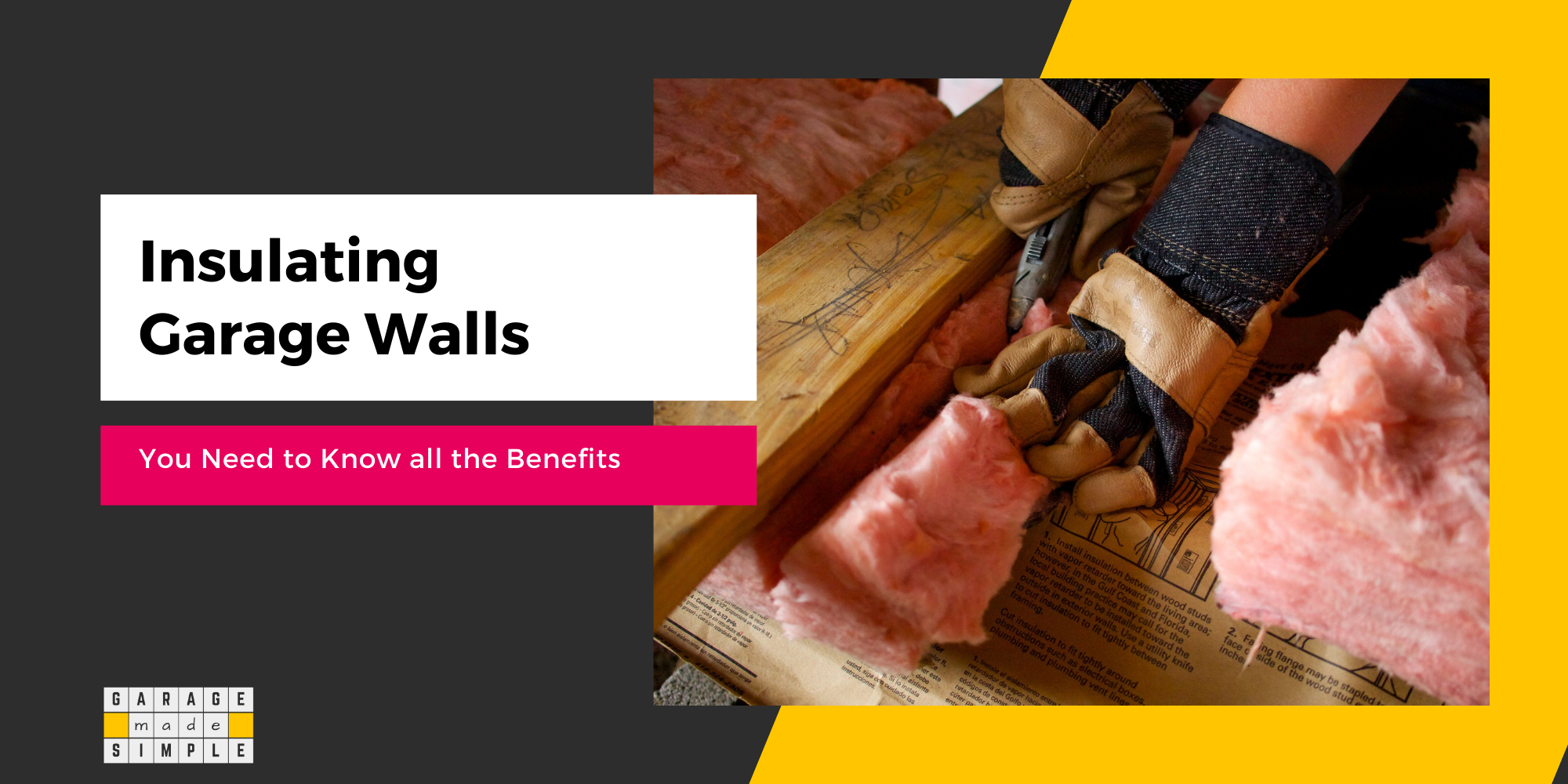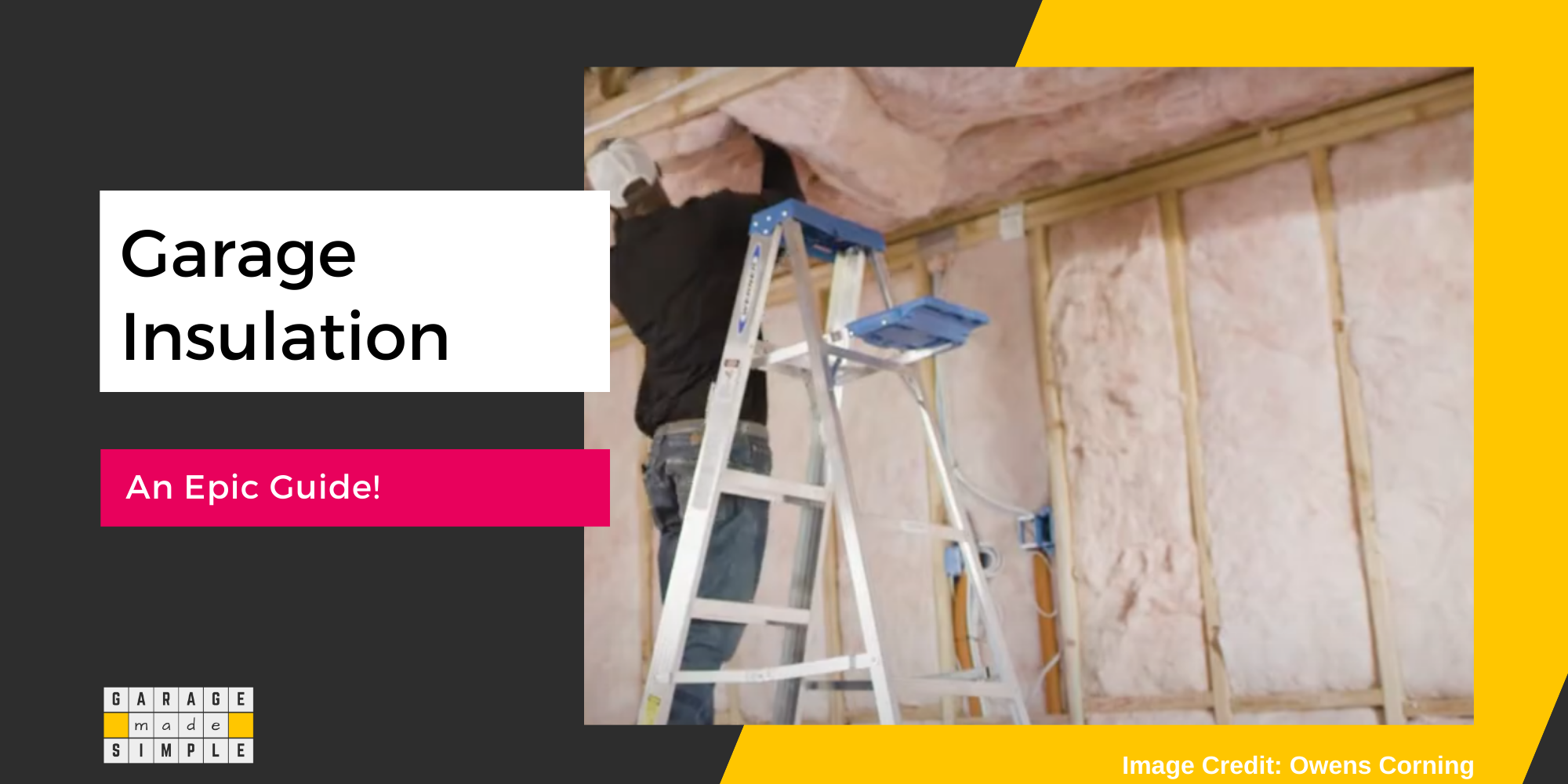9 Important Benefits of Insulating An Unheated Detached Garage
As an Amazon Associate, I earn from qualifying purchases.
What is the Point of Insulating an Unheated Detached Garage?
Are you planning to build a new detached garage? Just a decent place to park your cars. You want to keep it very basic and simple. So you have decided not to have any heating. Then what is the point of insulating an unheated detached garage?
Insulating an unheated detached garage takes minimal effort. You can do it yourself.
It is not too expensive either. Just 5-6% of the total cost of building the garage. Insulation will make your garage more comfortable and increase the life of your cars and other stuff you may store there.
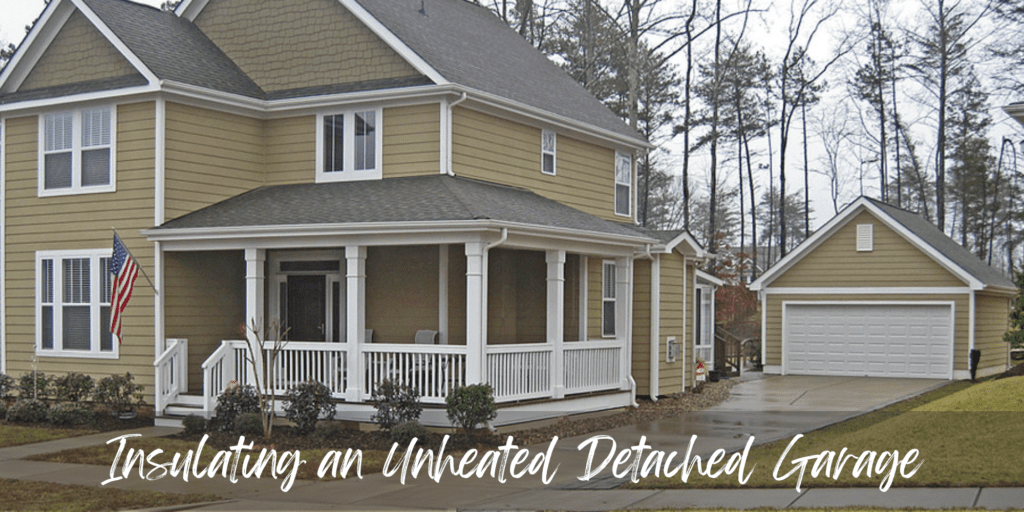
I will explain the benefits, options, steps, and costs of insulating an unheated detached garage, in this post.
Benefits of Insulating an Unheated Detached Garage
If the garage were heated then insulation would help reduce the heating cost.
However, in this case, we are saying there is no heating. That is, there is no energy cost. If there is no cost, you can not save!
But without insulation, the garage will get uncomfortable when the outside gets cold.

1. Improving Comfort Level
When it gets cold outside and the temperature drops to 50’s, the temperature in the garage also drops. The garage temperature, as compared to the outside, will depend on the combination of heating and insulation in the garage.
As there is no heating, it all depends on the insulation. If there were no insulation, the outside and inside temperatures would be more or less the same.
However, insulating an unheated detached garage could keep the inside temperature 5-20 degrees higher than the outside temperature.
The comfortable temperature range for humans is 70 degrees F. So with perfect insulation, we could still be comfortable in the garage, even when the outside temperature is in the 50’s.
2. Prolonging the Life of Your Cars
Extreme cold is detrimental to the life and performance of the car. If the temperature in the garage falls below freezing then the cars will be covered in snow and ice, even when parked in the garage. The salt in the deicing chemicals along with water will increase the risk of rust & corrosion.
It is also a lot more difficult to get a car started in the morning when the car has spent the night in a really cold garage.
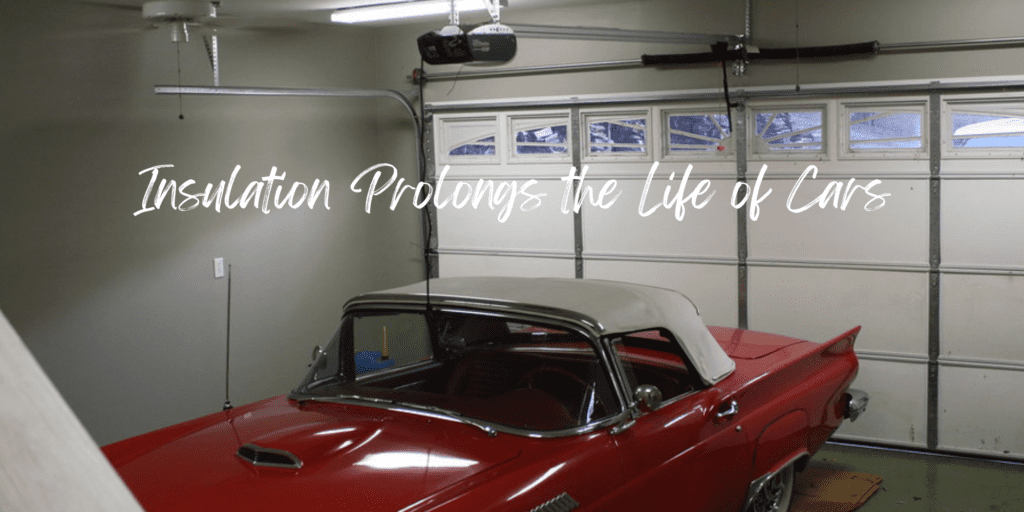
3. Preventing Damage to Stored Items
Many of the items that you store in your garage are sensitive to extreme temperatures. Many items will say “Store in a cool, dry place”. So obviously an uninsulated garage is not the place to keep them.
Paint, especially water-based paint, can not be stored in a garage, where temperatures can go below freezing. The polymer in cleaning supplies also breaks down in extreme cold.
Household and sports equipment that may have moisture or water, will also deteriorate when the water freezes. Examples are power washers, ceramic flower pots, surfboards, jet skis, and canoes.
Musical instruments made out of wood and wooden furniture may develop cracks due to contraction in extreme cold. Leather items have similar problems.
4. Increases Garage Structure Life
In addition to protecting stored items, insulation protects the garage structure from extreme temperature changes. Constant expansion and contraction of building materials due to temperature variations can weaken the structure over time.
Insulation provides stability, enhancing the longevity of the garage.
5. Soundproofing (Noise Reduction)
Insulating material usually absorbs sound very well. So by insulating garage doors and walls, you make your garage a quieter place, reducing noise from outside sources such as traffic or neighbors.
Soundproofing is desirable if the garage is also used as a workshop, gym, etc. and you do not want to disturb the neighbors.
6. Preventing Ice Formation on Garage Floor
Insulation of garage doors & walls helps in reducing humidity & condensation.
In winter, the snow the car brings in will form a pool of water on the garage floor, that freezes into ice during the night.
If the garage is not well insulated (and that includes insulation of garage walls) then the water on the floor can freeze to ice. This is a safety hazard.
7. Ensuring Water Pipes & Drains do not Freeze
Do you have water pipes and drains running through the garage? They may freeze and burst, in freezing winters, if your garage is not well insulated.
8. Property Value Enhancement
A well-insulated garage, even a detached garage, adds to the overall value of your property.
Potential buyers are likely to appreciate the added functionality and energy efficiency. As such they will be amenable to paying a somewhat higher price for your home.
9. Reduction in Carbon Footprint
Last but not least, insulating a detached garage contributes to energy conservation. By reducing your overall energy consumption, you are indirectly helping to lower your carbon footprint and minimize environmental impact.
When do you Really Need Insulation?
The US is a large country with many climatic zones. The weather in Alaska or even upstate New York is vastly different than in Texas or Florida.
The International Energy Conservation Code (IECC) has mapped the US counties and assigned an alphanumeric code to each one.
The numbers running from 1 to 8 indicate the temperature. The alphabets denote the humidity levels. A for Moist, B for Dry, and C for Marine.

For example, Sacramento in California is assigned code 3B because of its hot, dry climate, while Columbia in Wisconsin is assigned 6A for its cold and somewhat moist climate.
Counties with IECC codes between 4 and 7 get cold in winter. Detached garages in these counties will certainly benefit with some insulation.
Detached garages in counties with an IECC code of 2 or 3 will benefit from insulation too. But they might need a different type of insulation.
Want to know the IECC code for where you live? Check it out from the table on https://gist.github.com/philngo/d3e251040569dba67942
What is Heat Flow & How Does Insulation Work?
Heat moves from a high-temperature to a low-temperature area, just like water flows downhill. It does so by

Conduction
Conduction is the process by which heat moves from the high-temperature area to the low-temperature area through the solid material of the garage wall.
Convection
Convection is the process by which the air in contact with the high-temperature area of the garage wall moves and takes the heat away to the colder parts of the garage or the outside environment.
Radiation
Radiation is when the heat moves from the high-temperature area to the low-temperature area through electromagnetic waves such as visible light, UV rays, and infrared rays.
What does an R-value Mean?
How do you stop the water from flowing downhill? You build a dam.
How do you stop the garage heat from escaping to the cold outdoors? You use insulation.
Some materials, like fiberglass wool, are much better insulators than steel or a concrete slab. In other words, some materials have a higher “resistance to heat flow” than others.
R-value measures “resistance to heat flow”. The higher the R-value, the greater is the “resistance to heat flow”.
Want to know even more? Read my blog post What You Need To Know About R-Value For Garage Insulation.
Note that the R-value applies to “resistance to heat flow” by conduction. In case of heat loss or rather heat gain in climatic zones 2 and 3, a Radiant Barrier is more helpful.
How do you Finish a Detached Garage?
Once the basic shell of the detached garage has been built, you need to finish it before putting it to use. Utilities such as electrical and drainage would have already been installed during construction. But what about the walls?
In the US, the most common way of making a wall, especially a garage wall is by making it out of a wooden frame. The frame consists of two horizontal pieces of wood (plates) joined by equally spaced vertical pieces of wood (studs).
The wooden frame is finished with sheathing on the interior and siding on the exterior.
The stud bays, which is the space between the studs, the sheathing, and the siding, can be (and is) used to house utilities, such as cables, conduits, plumbing, and insulation.
Sheathing Material
Sheathing of the walls is done by making a wooden frame out of 2X4 or sometimes 2X6 lumber. The frame comprises vertical studs, spaced 16 inches apart on horizontal top & bottom plates.
The frame is attached to the concrete garage floor and sheathing material is nailed or screwed onto it.
Drywall is the sheathing of choice for most projects including garages. Its low cost, fire resistance, and ease of installation make it a preferred choice.
However, there are a few good alternatives to drywall too. Plywood and OSB have been gaining acceptance recently.
Stud Bay
Irrespective of what sheathing material you use, you create a cavity between two studs, the wall and the sheathing. This is called a stud bay or just a bay. The bay would be almost 4” deep.
The insulating material can be used to fill the stud bays. It is an opportunity, begging, not to be missed.
Insulation material manufacturers are well aware of this and produce insulation batts or rolls that are 3” to 3 ½” in thickness, for exactly this reason.
Types of Insulation & How Much They Cost?
Insulation for a garage does not need to be expensive. There are quite a few options available and they are not that costly, especially when compared to the cost of building a garage.
According to Home Advisor building a garage costs $50 per square foot, on average. A standard two-car garage is 20’X20’ (that is 400 square feet).
So a standard 2-car garage will cost around $20,000 to build.
Insulating the Detached Garage Walls
The three walls have an area of 3X20’X8’ (480 square feet). Let’s see what the insulation material cost (for the 3 walls alone) would be for the different options worth considering.
Insulation Batts or Rolls
Insulation Batts can be made from any insulating material. Typically they use fiberglass but other types of material such as cellulose, mineral wool or natural fibers can also be used.
Standard fiberglass batts have R-values ranging from R-2.9 to R-3.8 for every inch of thickness. This works out to an R-value of 9-15 for an insulation batt or roll that is 3” to 3 ½” in thickness. (Perfect for 2X4 stud walls of detached garages).
Owens Corning is pretty much a leader in fiberglass batt insulation. Check out:
Owens Corning R 15 Kraft Faced Fiberglass Batt Fits 2X4 Stud Walls
Owens Corning 678 SQFT 10 Bags of R 15 Kraft Faced 15 by 93 Fiberglass Batt Fits 2X4 Walls
Owens Corning EcoTouch PINK Fiberglass Insulation with PureFiber Technology is a preformed, flexible blanket insulation. It is produced in R-values from 11 to 49, with thicknesses ranging from 31/2 inches to 14 inches. It is available unfaced, or faced with either a kraft or foil vapor retarder.
The above will cost between $1.55 and $1.60 per sq. ft. The material cost of insulation for 3 garage walls works out to $745 and $ 770.
Fiberglass is a skin and lung irritant, so always wear protective eyewear, gloves, masks, and clothing when working with fiberglass insulation.
Fire Resistant Rigid Foam Boards
Fire Resistant Rigid Foam Boards are rigid panels usually made from Expanded Polystyrene (Styrofoam), or mineral wool. The R-Values range from 3.6 to 4.2 per inch of thickness. This works out to an R-Value of 11-15 for an insulation foam board of 3” to 3 ½” in thickness,
ROCKWOOL COMFORTBATT® is a stone wool insulation product used in wood and steel framing in new residential and commercial builds and renovations.
This semi-rigid batt has a unique flexible edge designed to compress as the batt is inserted into walls, attics, ceilings, and floor frames.
The safety requirements during installation are much lower than those for fiberglass batts or rolls. R-15 ROCKWOOL ComfortBatt Fire Resistant Stone Wool Insulation from Home Depot costs less than $0.80 per square foot.
The material cost of insulation for 3 garage walls works out to around $375.
Fire Resistance: Please note that both Fiberglass and Mineral Wool are fire-resistant and will not burn. However, backing such as paper, foil etc. and the wood studs and joists are not fire-resistant and can burn.
Spray Foam Insulation
Spray Foam Insulation is created by injecting two liquid chemicals into a spray gun which react to form a foam. The foam expands rapidly and will fill up every nook & cranny. It then hardens to create a powerful air barrier.
Spray Foam Insulation is extremely energy efficient. However, in my opinion, it is an overkill for a garage wall.
Insulating the Detached Garage Doors
When you buy new garage doors, you always have the option of buying insulated garage doors. However, if you choose to buy uninsulated doors, no worries. It is extremely easy to insulate garage doors and windows using insulation kits.
Expanded Polystyrene Foam Panels
The panels are made of Expanded Polystyrene (EPS) which can significantly reduce heat transfer by conduction. They often have a decorative and functional lamination of High Impact Polystyrene (HIPS) facer that adds both beauty & strength.
The lamination could also be reflective to reduce heat transmission through radiation. It is a great idea to buy the “Bundle”, costing around $175 – $200, as under:
Garage Door Insulation Kit (Bundle)
Garage Door Insulation Kit (Bundle)
Contains Matador Garage Door Insulation Kit (White) + Reach Barrier 3009 Kit (Silver)
Matador Garage Door Insulation Kit: The panels are made with the same OEM-grade product garage door manufacturers use.
Reach Barrier Reflective Insulation And Bubble Barrier Technology Blocks Up To 95-Percent Of Radiant Heat.
The cost for a 2-door garage will work out to $350 – $400 for this option.
Fiberglass Wool Panels
The panels are much more flexible. They are made by sandwiching fiberglass insulation wool within a tough, washable white vinyl facing on both sides. Due to their flexible nature, they do not dent.
Owens Corning Garage Door Insulation Kit
Owens Corning Garage Door Insulation Kit
Owens Corning’s Garage Door Insulation Kit is a complete kit comprised of (8) durable R-8 fiberglass insulation panels with tough, washable white vinyl facing.
Each kit provides enough material to insulate a single car’s garage door up to 9 feet wide by 7 feet 8 inches tall.
The kit costs around #$175. The installation is quite simple and very little DIY expertise & experience is required in both cases.
Insulating the Detached Garage Ceiling
You can lose a lot of heat through the garage ceiling during the night and cooler months. So insulating the ceiling is pretty important. The recommendation is to use at least R-38 insulation in climate zone 4.
Garage ceilings can be sheathed in plywood or drywall and can be insulated using
Insulation Batts or Rolls
This is similar to wall insulation, except you need a much higher thickness to get to the required R-value. Owens Corning has just the product for attic application.
Owens Corning R-38 Unfaced 24 by 48 Fiberglass Batt Fits 2X12 attic
Owens Corning 512 SQFT 8 Bags of R-38 Unfaced 24 by 48 Fiberglass Batt Fits 2X12 attic
Place this in between your trusses. For unfaced insulation make sure there is 2 inches of properly vented air space to prevent moisture in the insulation.
It contains no Paper Backing, Kraft Facing, on Material. This Product Cannot be Used for Exterior Walls but Works well for Interior Walls, Floors, and Ceilings.
This product will cost a little over $2 per sq. ft. The material cost of insulation for a 400-square-foot garage ceiling works out to around $800 – $825.
The installation is quite simple and very little DIY expertise & experience is required.
Blown-In or Spray Foam Insulation
Blown-in or spray foam insulation are other options, but they require contractors or specialists and are not the cost-effective choice for Insulating an Unheated Detached Garage.
Insulating the Detached Garage Floor
Generally speaking, insulating the garage floor is a good idea, especially for really cold climates. However, since you have chosen to keep the detached garage as basic as possible and even skip on heating, I will not recommend this.
Insulating the garage floor can be expensive. But should you want to learn more about it check out my earlier blog post How To Insulate Your Garage Floor And Save More!
How Much Does Insulating an Unheated Detached Garage Cost?
In summary, the total material cost of insulating a standard 2 car, 20’X20’ garage will be:
| AREA | MATERIAL COST |
| Three Walls | $745 – $ 770 |
| Two Doors | $350 – $400 |
| Ceiling | $800 – $825 |
| Floor | NA |
| TOTAL | $1895 – $1995 |
The material cost of insulating an unheated detached garage is less than 10% of the cost of building a garage.
Bottom Line
The bottom line is that insulating even an unheated detached garage can improve it, making it more livable and prolonging the life of your car and other precious belongings. It does not cost much and you can do it yourself.
So why not?
Thank you very much for reading the post. I do hope you found it informative and useful.





